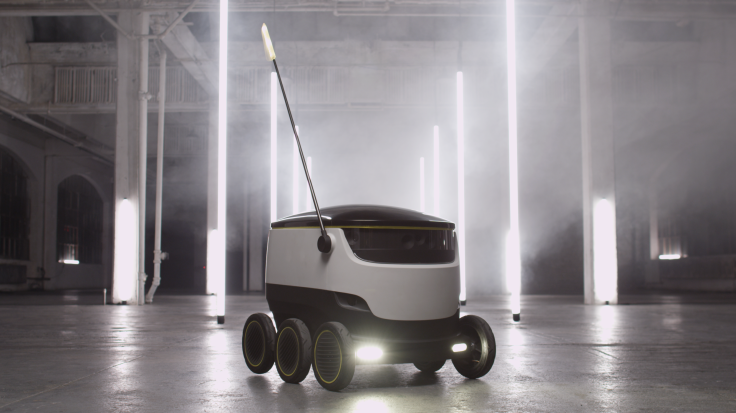Skype Co-Founders Launch Autonomous Robot Delivery Service

Two of the co-founders of video calling service Skype have turned their attention to deliveries. Their new futuristic-sounding company, Starship Technologies, plans to launch automated robots that will deliver goods to your door while promising to cut costs dramatically.
As the portion of goods bought with the click of a mouse rather than the ring of a cash register continues to grow, there are a lot of companies seeking to revolutionize the way the things we buy online are delivered to our door. For the most part these have focused on the use of drones, with Amazon, Walmart and most recently Google all seeking to find an airborne delivery method.
Starship Technologies has a different approach. Its ground-based robot will have six wheels, be able to carry the equivalent of two grocery bags and travel up to 4 miles an hour. As you can see in the video below, the robot looks like a mixture of Wall-E and a vacuum cleaner, which its developers say will "create unprecedented convenience and cost savings for individuals."
When the Starship robots hit the streets in U.S. and U.K. trials in 2016, the company says they will be able to complete local deliveries in as quickly as 5 minutes and no longer than 30 minutes from a local hub or retail outlet, with those deliveries costing up to 15 times less than the cost of current last-mile delivery alternatives.
“Our vision revolves around three zeroes -- zero cost, zero waiting time and zero environmental impact. We want to do to local deliveries what Skype did to telecommunications.” said Ahti Heinla, a Skype co-founder and CEO at Starship Technologies, who developed the robot with fellow Skype co-founder Janus Friis.
During delivery, shoppers will be able to track the robot’s exact location in real time through a mobile app, and on arrival only the app holder is able to unlock the cargo. The autonomous vehicles will rely on integrated navigation and obstacle avoidance software to make their way safely to the customer, but human operators will be overseeing the robot's movement, and they can step in to ensure safety.
Addressing the safety aspect of the service, Heinla said: “They travel at the slow speed of 4 miles per hour -- a brisk walking pace. They don’t fly; these are not drones. They travel on pavements blending safely in with pedestrian traffic.”
Amazon revealed plans for its drone delivery service almost two years ago, but it has since run into complications regarding regulation, the major sticking point for all drone-based delivery services. It is currently testing the service in Canada and the U.K. as it awaits regulations to become clearer in the U.S.
In August, Google unveiled Project Wing, a drone delivery service developed over two years at the secretive Google X lab. While Google has revealed details of the drone project, it is still some years from becoming a reality, the company says.
© Copyright IBTimes 2025. All rights reserved.





















